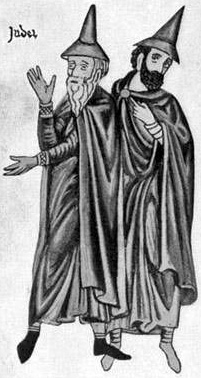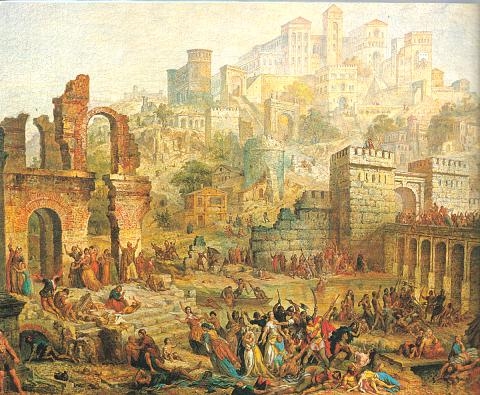|
American Federation Of Jews From Central Europe
The American Federation of Jews from Central Europe was established in New York City in 1939 to coordinate services to German-speaking Jewish refugees entering the United States.Teifer, Hermann. “History of the American Federation of Jews from Central Europe.” American Federation of Jews from Central Europe. 50th Anniversary Luncheon. 24 November 1991. It was incorporated in 1941. The Federation offered social services, assistance with immigration paperwork, and support with education and job placement. It also put on cultural activities. The Federation focused on issues of immigration between 1939 and the end of World War II, after which it shifted towards issues of restitution. The first branch of the United Restitution Organization was founded in 1948 as part of the American Federation of Jews from Central Europe,Grossmann, Kurt. Ten years : American Federation of Jews from Central Europe, Inc.: 1941-1951. New York: American Federation of Jews from Central Europe, 1952. and t ... [...More Info...] [...Related Items...] OR: [Wikipedia] [Google] [Baidu] |
German Jews
The history of the Jews in Germany goes back at least to the year 321, and continued through the Early Middle Ages (5th to 10th centuries CE) and High Middle Ages (''circa'' 1000–1299 CE) when Jewish immigrants founded the Ashkenazi Jewish community. The community survived under Charlemagne, but suffered during the Crusades. Accusations of well poisoning during the Black Death (1346–53) led to mass slaughter of German Jews and they fled in large numbers to Poland. The Jewish communities of the cities of Mainz, Speyer and Worms became the center of Jewish life during medieval times. "This was a golden age as area bishops protected the Jews resulting in increased trade and prosperity." The First Crusade began an era of persecution of Jews in Germany. Entire communities, like those of Trier, Worms, Mainz and Cologne, were slaughtered. The Hussite Wars became the signal for renewed persecution of Jews. The end of the 15th century was a period of religious hatred that ascribed ... [...More Info...] [...Related Items...] OR: [Wikipedia] [Google] [Baidu] |
Wiedergutmachung
The German word ''Wiedergutmachung'' after World War II refers to the reparations that the German government agreed to pay in 1953 to the direct survivors of the Holocaust, and to those who were made to work at forced labour camps or who otherwise became victims of the Nazis. The sum would amount, through the years, to over 100 billion Deutsche Mark. Historian Tony Judt writes about ''Wiedergutmachung'': :In making this agreement Konrad Adenauer ran some domestic political risk: in December 1951, just 5 percent of West Germans surveyed admitted feeling ‘guilty’ towards Jews. A further 29 percent acknowledged that Germany owed some restitution to the Jewish people. The rest were divided between those (some two-fifths of respondents) who thought that only people ‘who really committed something’ were responsible and should pay, and those (21 percent) who thought ‘that the Jews themselves were partly responsible for what happened to them during the Third Reich.’ When th ... [...More Info...] [...Related Items...] OR: [Wikipedia] [Google] [Baidu] |
United Restitution Organization
The United Restitution Organization (URO) was established in 1948 as a legal aid service to assist victims of Nazi persecution living outside Germany in making restitution and indemnification claims against Germany and Austria. The URO has served over 250,000 clients. It helped Jews, Roma, and other victims of Nazi crimes. At its most expansive, the URO maintained 29 offices in 15 countries around the world."United Restitution Organization." Encyclopedic Dictionary of Judaica. Wigoder, Geoffrey, ed. New York; Paris: Leon Amiel, 1974. p. 609. British barrister Norman Bentwich was the chairman of the URO board from 1948 until his death in 1971, and Kurt May Kurt May (1896–1992) was director of the United Restitution Organization, which assisted victims of Nazism, from its inception in 1948 to his retirement at age 91, in 1988. For more than forty years he played a role in efforts to obtain compensat ..., a German-born lawyer who had fled the Nazis in 1934 after he defended a leading ... [...More Info...] [...Related Items...] OR: [Wikipedia] [Google] [Baidu] |
Jewish Restitution Successor Organization
The Jewish Restitution Successor Organization Inc. (JRSO, also IRSO) was founded in 1947 in New York by various American and international Jewish organizations. Originally, it was incorporated on May 15, 1947, as the Jewish Restitution Commission, but in 1948 changed its name to the Jewish Restitution Successor Organization at the request of American military authorities. History The JRSO founders were twelve of the largest Jewish organizations worldwide: American (American Jewish Committee, American Jewish Joint Distribution Committee, Jewish Cultural Reconstruction), British (Anglo-Jewish Association, Board of Deputies of British Jews, Central British Fund, Council for the Protection of the Rights and Interests of Jews from Germany), French (Conseil Représentatif des Institutions juives de France), Zionist ( Agudas Israel World Organization, Jewish Agency for Palestine), an organization representing the interests of the Jewish congregations in the American Zone (''Interessenvert ... [...More Info...] [...Related Items...] OR: [Wikipedia] [Google] [Baidu] |
Jewish Trust Corporation
The Jewish Trust Corporation (JTC) was established in 1950 in the former British zone of occupation in northwest Germany as a Jewish body to pursue claims for the restitution of heirless property of murdered persons and dissolved organizations that had been pursued on racial grounds under the Nazi regime. It was based on the model of the Jewish Restitution Successor Organization, which had been established in the American zone in 1948. By the end of 1967, the JTC had recovered about 169,500,000 DM (approx. $42,375,000), and it wrapped up its operations by 1980. Many of the JTC's records are held by the Central Archive for the History of the Jewish People. References {{reflist Further reading * Kapralik, Charles I. (1962). Reclaiming the Nazi loot: the history of the work of the Jewish Trust Corporation for Germany. London: Jewish Trust Corporation for Germany Holocaust charities and reparations Compensation for victims of crime ... [...More Info...] [...Related Items...] OR: [Wikipedia] [Google] [Baidu] |
Curt Silberman
Curt C. Silberman (May 23, 1908 – September 9, 2002) was a German-Jewish and American attorney, community leader, and member of Jewish organizations in both Germany and the United States. Born Kurt Leo Silbermann in Würzburg, Germany, he and his wife Else fled due to the rampant antisemitism of the Nazi era and settled in New Jersey. His legal career in the United States focused on restitution work for the victims of the Nazi government. Silberman was active in many Jewish organizations. He was a co-founder of the Leo Baeck Institute, and for a period of time, the head of American Federation of Jews from Central Europe and a member of the Executive Committee of the Conference on Jewish Material Claims Against Germany. " |
Leo Baeck Institute
The Leo Baeck Institute, established in 1955, is an international research institute with centres in New York City, London, and Jerusalem that are devoted to the study of the history and culture of German-speaking Jewry. Baeck was its first international president. The Leo Baeck Medal has been awarded since 1978 to those who have helped preserve the spirit of German-speaking Jewry in culture, academia, politics, and philanthropy. Organizational structure The Leo Baeck Institute is made up of three independent international institutes, as well as two Berlin centres, and two Berlin working groups that are governed by the Leo Baeck Institute International board: * Leo Baeck Institute New York/Berlin * Leo Baeck Institute Jerusalem * Leo Baeck Institute London * Berlin centres: ** Leo Baeck Institute New York – Berlin office ** Leo Baeck Institute Archives at the Jewish Museum Berlin * Berlin working groups: ** ''Freunde und Förderer des LBI e.V.'' ** ''Wissenschaftliche Arb ... [...More Info...] [...Related Items...] OR: [Wikipedia] [Google] [Baidu] |
Aftermath Of The Holocaust
The Holocaust had a deep effect on society both in Europe and the rest of the world, and today its consequences are still being felt, both by children and adults whose ancestors were victims of this genocide. Evidence in Germany German society largely responded to the enormity of the evidence for and the horror of the Holocaust with an attitude of self-justification and a practice of keeping quiet. Germans attempted to rewrite their own history to make it more palatable in the post-war era. For decades, West Germany and then unified Germany refused to allow access to its Holocaust-related archives in Bad Arolsen, citing privacy concerns. In May 2006, a 20-year effort by the United States Holocaust Memorial Museum led to the announcement that 30–50 million pages would be made available to survivors, historians and others. Survivors Displaced Persons and the State of Israel The Holocaust and its aftermath left millions of refugees, including many Jews who had lost mo ... [...More Info...] [...Related Items...] OR: [Wikipedia] [Google] [Baidu] |
German-Jewish Culture In New York City
The history of the Jews in Germany goes back at least to the year 321, and continued through the Early Middle Ages (5th to 10th centuries CE) and High Middle Ages (''circa'' 1000–1299 CE) when Jewish immigrants founded the Ashkenazi Jewish community. The community survived under Charlemagne, but suffered during the Crusades. Accusations of well poisoning during the Black Death (1346–53) led to mass slaughter of German Jews and they fled in large numbers to Poland. The Jewish communities of the cities of Mainz, Speyer and Worms became the center of Jewish life during medieval times. "This was a golden age as area bishops protected the Jews resulting in increased trade and prosperity." The First Crusade began an era of persecution of Jews in Germany. Entire communities, like those of Trier, Worms, Mainz and Cologne, were slaughtered. The Hussite Wars became the signal for renewed persecution of Jews. The end of the 15th century was a period of religious hatred that ascribed ... [...More Info...] [...Related Items...] OR: [Wikipedia] [Google] [Baidu] |
Jewish Organizations
Jews ( he, יְהוּדִים, , ) or Jewish people are an ethnoreligious group and nation originating from the Israelites Israelite origins and kingdom: "The first act in the long drama of Jewish history is the age of the Israelites""The people of the Kingdom of Israel and the ethnic and religious group known as the Jewish people that descended from them have been subjected to a number of forced migrations in their history" and Hebrews of historical Israel and Judah. Jewish ethnicity, nationhood, and religion are strongly interrelated, "Historically, the religious and ethnic dimensions of Jewish identity have been closely interwoven. In fact, so closely bound are they, that the traditional Jewish lexicon hardly distinguishes between the two concepts. Jewish religious practice, by definition, was observed exclusively by the Jewish people, and notions of Jewish peoplehood, nation, and community were suffused with faith in the Jewish God, the practice of Jewish (religious) la ... [...More Info...] [...Related Items...] OR: [Wikipedia] [Google] [Baidu] |
Organizations Established In 1948
An organization or organisation (Commonwealth English; see spelling differences), is an entity—such as a company, an institution, or an association—comprising one or more people and having a particular purpose. The word is derived from the Greek word ''organon'', which means tool or instrument, musical instrument, and organ. Types There are a variety of legal types of organizations, including corporations, governments, non-governmental organizations, political organizations, international organizations, armed forces, charities, not-for-profit corporations, partnerships, cooperatives, and educational institutions, etc. A hybrid organization is a body that operates in both the public sector and the private sector simultaneously, fulfilling public duties and developing commercial market activities. A voluntary association is an organization consisting of volunteers. Such organizations may be able to operate without legal formalities, depending on jurisdiction, includi ... [...More Info...] [...Related Items...] OR: [Wikipedia] [Google] [Baidu] |



